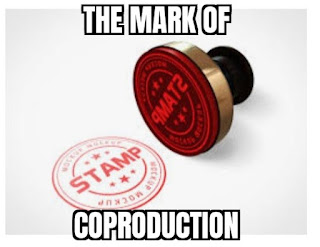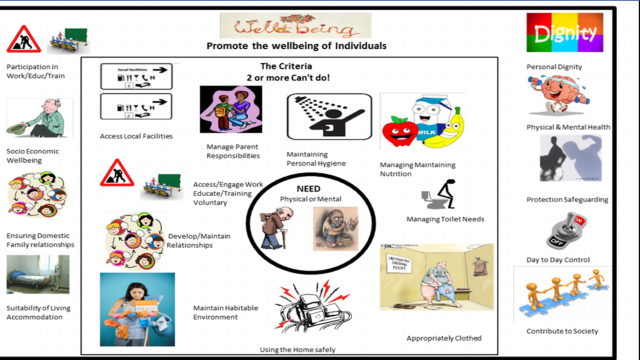The Mark of Coproduction
The Mark of Coproduction
Nothing scoped or suggested below is new, it looks at the current models
used and looks at formalizing and improving these for the benefits of all
involved.
The principle and ideas behind it are to showcase the work done and promote it
by offering a comprehensive system that is understood and followed, to try and
achieve the values and dreams of the ideals of coproduction. By offering the
Mark, it will promote true personalised coproduction, and ensure people are
educated on its values and principles.
Costs
There are no substantial costs involved, apart from the process which a group
of contributors with a lead person could be tasked with in leading and running.
This plan gives a quick outline.
There will be an element of time and checking, however again I believe peer
leaders could be utilised to produce this project with one member of an
organisations team. This tends to happen anyway in a uniformalised way at
present
A analytical SMART plan detailing component parts can be produced with this
brief if required.
Benefits
To make clear what coproduction is and promoting it where it has
occurred for the benefit of all parties.
Putting in a system so everyone is clear what is required to achieve coproduction
by working with Peer Leaders or people with lived experience, and all the constituent
parts to personalisation including link workers, personal budgets holders, and
others that fall within the scope of universal personalisation and other similar
streams in Health and Care, showing what can be achieved and how this can also
be used to show they are meeting their statutory duties under sec 149 of the
Equality Act, and the consultation requirements of Health and Social Care act.
The Marks Criteria
There is an amazing amount of work being done called
coproduction, in fact throughout the whole universal personalisation process
and through various other means in Health and Care. Though seen and valued by
those that participate, it is not seen by external partners, what has or has
not been c-produced by the team and all the contributors or what has actually
been involved or taken place. There is also no clear process that is understood
by both internal and external practioner as to how to achieve proper
coproduction. Often a quick meeting is used and members of the public invited
to give their views, and this is then promoted as personalised or coproduced.
This method has never allowed the true principles of participatory involvement
to be followed, thus distorting what might be truly be achieved.
I am proposing that a recognition mark is
introduced (logo) which can be displayed to show a project or system has been
through the process. Not everyone will want the Mark of approval as some people
may just want to be involved with bits and pieces but the Mark will help to
show a long term systematic methodology which can showcase and promote the
benefits of all involved.
The proposal is based on a three tier system.
1. The commitment
2. Involvement
3. Promotion and continuous development.
The Commitment
Before a team, project, or department wants to
work in a more participatory way they have to show a firm commitment by
agreeing to set principles on use proper coproduction methodologies which is to
work with Peer Leaders, people with lived experience, link workers, personal
budget holders and people from protected characteristics (contributors) as appropriate
allowing inclusion, independence, choice and control.
Apart from intention and declaration i.e. by
promotion via multimedia or other means and internally the commitment must
include 50% of their working employees having completed within a time
frame to have the coproduction online module offered (to be developed).
The project must include two nominated lead persons,
one from the lead team and another from a person picked from the contributors, be
planned (documented) in advance and smart planed (see below), specifically
including a good amount of time is allocated (12 weeks min) to coproduce with all
contributors. Specific people must be named and allocated for responses. With
specific time frames including review dates. These plans will be shared with
the team, and contributors and can be used to show workload and commitments.
A briefing document will be provided by the team
clearly stating what the intention and purpose of the project is. Ideally a
small group of contributors with a member of the team will look at the brief
and give any initial pointers to help guide the project before it’s started. A
contributor should be selected as joint lead with the team member coproducing
the project.
Once the report, webpage, or other project has
gone through the scoping exercise, an invite will be as sent by the team to all
contributors, this will include the project brief. People will be invited on
the day to meet up and discuss. However documents slides will also be sent out
to all contributors who expressed wanting to be involved. This way people who
may not be able to attend will have their views included. Via email or other
accessible means should they want to do so. Time should be added (1 week) after
meetings to allow people who couldn’t contribute at the time of the meeting to
have their say. Any comments made should be added and distributed to all.
After the meet or subsequent to several meets as
may be required. All questions whether answered or those in the chat (if teams
or other electronic means are used) or even subsequent questions sent in will
be answered in writing and a copy provided to the group. All activity must be
updated on the plan with clear responsibility and time frames. Time frames can
be extended after being set, but clear reasoning’s should be provided and
documented on plan.
On completion of the project - a review of the
exercise will be carried out by the chairs, a nominated group of peer leaders
(1-3) and the project team.
The mark will be awarded and promoted via all
means possible as a Coproduced project. A commitment to revisit and go through
the project in a years’ time will be made and planned for with nominated
people.
Involvement
All parties agree as part of the involvement to
understand the pressures put on the organisation and that work must be
completed within budgetary and staffing constraints. Everything may not be
possible, however involvement is carried out to ensure people’s voices are
heard, where something is not possible this will be made clear, but steps will
be taken to mitigate and explain any negative factors 9as required under the Gunning
principles under section 149 of The Equality Act.
All contributors, will ensure their involvement
is based on a duty of service to the organisation. They must not at any time
use their position to share any information outside the circle of involvement
without permission nor use any knowledge for personal gain.
These rules apply to any external consultants as
well, and they should be made aware of such and be in agreement. Subject to adherence
to the rules they may seek permission to promote that they helped in achieved
the Mark.
All material must be provided in line with Accessibility
guidance (Equality Act NHS, RNIB, BSL etc.)
All contributors will not only be involved in
the project but will be involved from inception to its completion and beyond if
subsequent checks are required.
Any contributor may pull out of a project at any
time, they must also declare an interest in any projects that may have a
positive or negative effect on their health or wellbeing.
Contributors must be encouraged to have
completed an appropriate training programme (which must include how the orgnisations
works and runs) or other to be involved in any projects. Any contributors working
or has worked in any project for the Mark will be able to use the Mark on their
personal multimedia posts or state their involved.
All contributors may be asked to take on
additional training for specific projects that require additional knowledge.
Contributors will work to develop and follow a code
of conduct.
All initial project plans will be published and
informed of, a contributors may choose, or opt out of any involvement as they
choose. An advance warning should wherever possible be given for opting out so additional
people with relevant skills will be found.
Involvement will always try to include as many
protected characteristics from the Equality Act as possible, where any
protected characteristic is not included then contributors’ leaders or the lead
team will ensure they will try and seek involvement from someone with the characteristic
or involve an organisation externally which represents that characteristic.
If involvement includes any effect on a
protected characteristic an Equality Impact Assessment will be included, this
will highlight the marks involvement and mitigate where people’s concerns haven’t
been reached (legal requirement).
Promotion
and continuous development.
On receipt of the Mark all parties will work
to ensure they promote that the piece of work has met the standard of the work.
A review date will be set. A short piece will be
written in blog or other format detailing the process and used to promote and
highlight the achievement.
If after achievement any comments or issue are
brought to the attention of any party's involved, whether it’s a complaint,
comment, or praise, all parties will be informed. Any complaint will be dealt
with efficiently, views of contributors will be included as well as the team
and recorded.
Any changes will be made promptly and all parties,
will be advice, where not possible to make changes at the times these will be
included at review time and people notified. This will ensure continuous
monitoring and involvement.
If the original proposer chooses to opt out, or
a group of (3) contributors and 1 member of the lead team feels that the
project at any time after achievement loses focus on the principles a meeting
will be arranged.
If no solution will be found management (co-chairs)
will have the final say on whether to remove the Mark from the project. This
will be advertised, to show that personalisation is a continuous project.
Each year the project if it keeps to its
commitments to personalisation they may either use bronze, silver, and gold
according to length in years advertising the Mark or use a number to show
reaccreditation for number of years.




Comments
Post a Comment